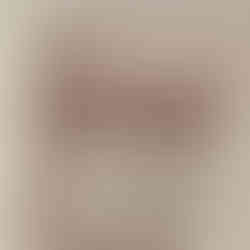In the past calligraphy was perceived to be guarded by elitists, insisting it must take years to learn and perfect your skills which of course put most of us off picking up a pen. The Victorians admired medieval Manuscripts such as The Lindisfarne Gospels, but misunderstood how the letterforms were created.
When trying to emulate the alphabets they would draw an outline, and then fill it in. It was Edward Johnston OBE who realised the manuscripts were made using a broad edged nib which created the contrast between thick and thin strokes in single movements. His influence on typography and calligraphy today is undisputed, his book Writing & Illuminating, & Lettering (1906), contained clear and practical information on writing procedures as well as aesthetics kick-starting a revival in the art of traditional calligraphy. The formal styles they championed, focus on forming each letter to be identical to the next.
This uniformity was admired in the past but now that a computer can do a successful version of this in a fraction of the time, a shift has taken place. The digital age has given rise to greater awareness about design and much easier access to amazing ideas and styles. There’s a renaissance in calligraphy right now, due in part to the new hybrid style now known as ‘modern calligraphy’.
The old ways
Traditional calligraphy that you see in ancient documents in museums was made with a broad edge nib (a nib with a wide, flat end instead of a point). This is held at a consistent angle to create the thick and thin strokes.
The key to modern calligraphy however is that it’s written with a pointed nib, rather than a broad edge nib. This means that the nib comes to a sharp point and you make thick and thin lines by pressing harder and softer as you go up and down. It is also called a ‘dip pen’, as you dip your pointed pen into ink. As the nib has a point, it can be used by anyone, right-handed or left-handed.
Re-employed to create a chic, informal style of work, the pointed nib was originally used for Copperplate calligraphy, a 'flourishy' formal style. The modern calligrapher, has adopted this tool and thrown away the formal rules and added their own personality to their work, to develop a much more accessible way of working.
Today’s version of calligraphy doesn’t follow the strict rules that govern traditional calligraphy. The lettering still needs to be balanced, but each letter doesn’t have to be identical every time it's written, it is about learning to play with the rules. It doesn’t matter if your handwriting is terrible or you’re not artistic. The fun thing is that it doesn’t need to be perfect; it’s the imperfections that make it so human, and that is the appeal.
Immersing yourself in what you are creating affords the perfect escape. When you do calligraphy you get so absorbed in what you’re doing that you can forget about everything else. The focus of the mind on the rhythm of the pen as you make the letter-strokes, helps free up “mind space”. When concentrating on the shape of the letterform, making the pen work, and remembering to spell the words you are writing correctly, all other thoughts are pushed from your mind. That is why calligraphy is so good for relaxing.
How to begin
Decide how you would be most comfortable learning, either face to face at a local calligraphy class near you, a virtual class live-streamed, or you might prefer a pre-recorded class, so that you can stop/start and fit learning around your other commitments.
Little and often is the best way to improve, 10 minutes a day. Really think about your technique and what you are doing, so that you eliminate bad habits and make small adjustments so that your style and flow improve. Drills are the repetitive practice required to learn the art of beautiful and expressive calligraphy. These conscious marks build the automatic response to press harder on the downstroke and lighter when moving the pen upwards. They’re a good way to do this, and when you can’t think what to write, make patterns with the nib so that you learn to control it and understand how to get the best from it. Beginners tend to grip the pen tightly as they may be nervous, but this can make you wobble, so as you gain the confidence to loosen your grip and relax, you will achieve better results. If you find it hard to write because of limited movement or pain, then adapting the pen holder with a gripper can help.
Work slowly and focus on each stroke and you will start to build up the muscle memory that will help your calligraphy improve and become more consistent. You don’t need many tools or much space, so this is an inexpensive hobby.
This tactile perception is a huge part of learning calligraphy, working with our hands results in an experience that doesn’t end with the mental process; calligraphy is tactile, creativity and rewarding.
Sitting down to write can be considered similar to meditation, calligraphy requires you to slow down which allows you to create a space of self-care and let your mind unwind. As technology pushes us to go faster, lifestyle and wellness trends focus on listening to the need for balance, self-recognition, living in harmony with oneself and the environment and so calligraphy is being seen as part of this, a practice of well-being.
All the gear
Writing instruments that you might have thought had disappeared into the mists of time are reappearing, being embraced by an increasingly wide audience. Here’s my guide for what to buy to begin.
Pointed Nibs
There are hundreds of them and you can try them all once you have learned the basics. To begin with, I recommend a Leonardt 30 nib, it’s perfect for beginners as it’s easy to use, and is flexible enough to give you great contrast of line. We have a few that we use in workshops, but for a larger selection try the sites below.
Brush Pens
If you’re nervous to try a nib and ink, you can get similar results with a ‘brush pen’. With their flexible tip, they react in a similar way to a pointed nib. The Pentel Fude Touch brush pen is lovely to use and writes to the scale of a nib.
Papers
Rhodia pads are the perfect paper for calligraphy, their smooth surface allows the nib to flow across the page without the ink feathering or seeping through.
Inks
Visit L. Cornelissen & Son for an array of inks and pigments. In the heart of London, it is a stone’s throw from The British Museum.
Our website has a small selection of supplies that are specially made or stocked as they are tried and tested by us, so beginners can buy with confidence.
Attend a Workshop
Having a tutor show you exactly where to make minor adjustments to their angles and positioning can make all the difference to picking calligraphy up quickly. Most teachers will do demonstrations so that you can watch them and see what to do firsthand. Learning together means you can chat about your lettering and get inspiration from each other, so it can be a great way of making new friends.
Buy a Book
There is an array of books available teaching calligraphy, whether you learn directly from them or use these as a reinforcement of what you have learned in a class, they will offer you ideas for ways of practicing and projects to apply your new skills.
Use Social Media
Instagram is a fantastic platform for sharing your own calligraphic work. Photograph your calligraphy and show your results or simply browse what others are doing to get ideas and inspiration. Pinterest also has all sorts of ideas, free downloads, and tutorials to help and inspire you.
Learn Online
If you prefer to learn from home there are live-streamed calligraphy workshops or pre-recorded workshops available online. With the kit being sent to your home this is an easy way to get everything you need in one go, then at the specified date and time, by logging onto Zoom, you can learn without leaving the living room!
Theres a thriving online community of calligraphy enthusiasts that has developed online and now that Covid restrictions are beginning to ease, hopefully, these online communities will be able to migrate to face-to-face meetings. There are calligraphy groups on Facebook that give feedback to each other and we run a calligraphy club that you can join that has weekly zoom sessions, worksheets to download as well as fun forums and challenges. It’s subscription based and will keep you motivated and learning month on month.
We hope this has helped you decide on where and how you would like to start learning calligraphy. The term 'modern' encompasses calligraphy created using a pointed nib, a paintbrush, or a brush pen.
Pointed nib calligraphy is the best place to start. You learn the processes that are fundamental to all modern calligraphy, but because the nib forces you to go slowly it is a good place to begin. The nib keeps you working slowly and with focus.
Once you understand the basic principle, begin to experiment with brush pens. Just like a nib, the thick and thin lines which make calligraphy distinctive are made by changing the pressure applied. Handy for when you are on the go as there’s no need to carry inks or water, the brush pen is wonderfully convenient.
If you would prefer trying a more formal style? From Blackletter to swirling Copperplate scripts, calligraphy comes in all shapes and sizes so whether you want to look back into the history of lettering or play with new emerging styles it’s so wonderful to put pen to paper and use our hands again to write beautiful things.
Click here to see what dates are coming up for workshops in Copperplate calligraphy.











































Calligraphy, like beach buggy racing, is all about control and flow. Originating from ancient scripts and artistry, calligraphy began as a way to bring beauty to written words. To start, practice smooth, controlled strokes—just as you’d handle the steering in a race. With patience, you’ll master both style and precision!
Just as CarX Street Drive teaches control on the streets, calligraphy focuses on precision and flow. Mastering calligraphy, like mastering driving, involves focus and technique. Begin with a pointed nib for thick and thin strokes, and soon you’ll navigate letters with ease—just like handling hairpin turns on virtual roads. Enjoy the journey. Click here to get more information
In the fnf skill game, you will play as the character Boyfriend and compete with formidable opponents through tracks full of difficulties and challenges.
I'll be sure to regularly follow your page so I can get access to any interesting and new information. stickman hook
I will make it a point to follow your page on a consistent basis in order to access any fresh and fascinating information. connections game